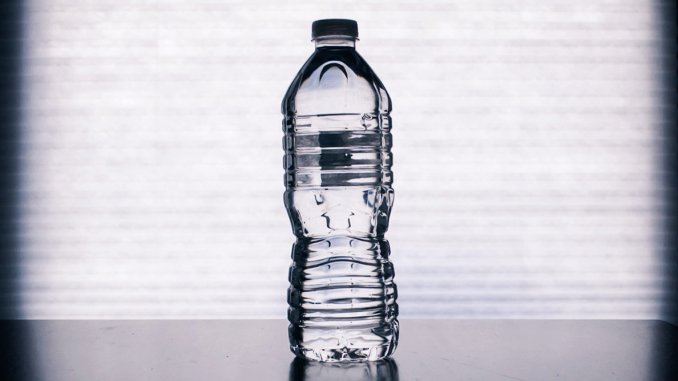硅烷气爆炸给太阳能产业蒙上阴影
时间:2010-04-04 阅读: 我要评论:
硅烷气爆炸给太阳能产业蒙上阴影
In 2007, outside Bangalore, India, an explosion decapitated an industrial worker, hurling his body through a brick wall. In 2005 a routine procedure at a manufacturing plant in Taiwan caused a spontaneous explosion that killed a worker and ignited a blaze that ripped through the factory, shutting down production for three months. Both incidents shared a common cause—silane, a gas made up of silicon and hydrogen that explodes on contact with air. And both incidents occurred in the same industry—solar power.
Among other environmental black marks, the process of manufacturing photovoltaic (PV) cells from silicon relies on this dangerous pyrophoric gas. As the industry gears up to meet growing demand—6.4 gigawatts of new photovoltaic installations were built worldwide in 2009 according to the European Photovoltaic Industry Association, the bulk of it silicon solar cells—what are the human health and environmental concerns related to solar power?
Of course, silane is hardly the only environmental hazard involved in solar cell production. Others include: toxic by-products from polysilicon manufacture dumped indiscriminately in China; air pollution spewed from coal-fired power plants that provide the electricity needed to produce photovoltaics; and recovering cadmium, a known human carcinogen that is a primary ingredient in some thin-film solar cells, from mining slimes. Still, only silane (SiH4) has been linked directly to any deaths as a result of the solar industry.
"Of all the toxic or reactive molecules that [solar] industry uses, silane has been involved in 10 fatalities in the last 20 years. All the others put together, it's been zero," says retired chemical engineer Eugene Ngai, president of a specialty gas safety consultancy and a silane expert. "Where I have a concern is in the photovoltaic industry…. PV could be in a light industry zone, it could be close to residential areas."
Yet, the gas is essential—despite its dangers, silane remains the best way to deliver silicon molecules to a surface, because at high temperatures (above 400 degrees Celsius) it breaks into silicon and hydrogen. "We just burn off the hydrogen, like a gas flare," says Subhendu Guha, chairman of PV maker Uni-Solar.
That means it is ubiquitous, as well. In addition to the photovoltaic industry, makers of flat-panel displays, semiconductors, even coated glass, all employ silane and all have struggled with the safety issues surrounding the compound. But it is the rapidly growing manufacture of solar cells that is driving increased production these days; hundreds of new facilities to manufacture photovoltaic cells have opened around the world in the past five years. "Practically every silicon photovoltaic company has silane in some form or other," notes Ajeet Rohatgi, director of photovoltaics research at the Georgia Institute of Technology. "Without it, you wouldn't get high efficiency…. It's one of those things you can't live without."
That's because the gas can be used to make several of the layers in a silicon photovoltaic—from the top of the cell where it is used to deposit a layer of silicon nitride that ensures that all sunlight is absorbed, to the bottom where it can be used to deposit another layer that helps reflect back any missed photons of sunlight, boosting the efficiency of the cell at converting light into electricity. "You've found a mirror that reflects light back into the cell and gives light a second pass," Rohatgi says. "That back layer is very critical to get thinner wafers [of silicon] and better back surface reflectivity and, thus, lower cost and higher efficiency."
That critical factor means tractor–trailers traverse U.S. highways transporting tanks of silane as well as cargo ships laden with canisters of the gas cross the Pacific to factories in Asia, particularly China. It also means that a vast industrial structure in rural Washington State churns out solar-grade silicon, with silane as a by-product—plagued by shutdowns due to issues with the pyrophoric gas. A few thousand tons of SiH4 are produced annually worldwide, a number that will swell in the future as more and more microelectronics, flat panels and silicon photovoltaics are produced.
Decreasing the thickness of the silicon layers—one answer to the cost challenge in photovoltaics—is not, however, a solution for the silane problem. If anything, amorphous silicon solar cells, which rely on relatively thin layers of silicon, employ more silane as part of their process, using the gas to deposit the thin layer of semiconducting materials that manufacturers such as Sharp and Uni-Solar need.
But there is an alternative. Quebec-based manufacturer SiXtron Advanced Materials has developed a way to make a more stable gas with similar properties via gasifying polymer pellets. The idea is to hook the SiXtron "Sunbox" to existing silicon photovoltaic manufacturing lines to provide a methyl silane gaseous mixture via the same pipes that would normally deliver silane from a canister. "The methyl silane gases are not pyrophoric, they are simply a flammable gas," says Bates Marshall, SiXtron's executive vice president of sales and marketing. "But a leak does not mean an explosion."
The key to the mixture's stability is replacing some of the hydrogen in typical silane with other molecules, such as carbon, to make the resulting gas less explosive. The silicon carbon nitride that this alternative deposits may even be better at helping reflect light back into a solar cell—and SiXtron's silane-free coating has been shown to reduce the loss in efficiency endemic to solar cells when they are first introduced to sunlight.
Georgia Tech's Rohatgi has been testing SiXtron's machine versus conventional silane solar cell production and found that they produce similar quality cells. "The cells we have made for SiXtron are just as good as what are being made in industry," he says. "It is great to have a technology which gives you gas without compromising efficiency. It is taking the risk out of the product."
Such an alternative may be vital, given that silane's behavior under various conditions remains a mystery, even to scientific experts. "Its behavior when released is unpredictable," admits Ngai, who has advised SiXtron. "As a result, silane has been involved in quite a number of significant incidents."
Already, such issues have driven major companies such as General Electric to opt for competing technologies, investing in thin-film solar cells made from cadmium telluride by PrimeStar. Amorphous silicon "is attractive because of the availability of silicon but you still have to have silane in high purity," says electrical engineer Danielle Merfeld, director of solar technologies at GE Global Research. Making solar cells from cadmium telluride "is a much more robust and forgiving process and material structure."
Regardless, silicon in its many forms makes up more than 80 percent of the current mix of photovoltaic production. It remains to be seen if the SiXtron alternative thrives, even though the company has partnered with solar manufacturing equipment provider Roth & Rau. Other potential alternatives in the past, such as disilane, faltered when they proved too expensive to make. "If industry sees it gives no performance loss and, if anything, it has potential for improving performance, then I see no real reason for industry not to embrace it," Rohatgi says. "It will take time."
ScientificAmerican(《科学美国人》)原文地址:
http://www.scientificamerican.com/article.cfm?id=explosive-gas-silane-used-to-make-photovoltaics
| 不含 BPA 的产品未必安全!研究指出 BPA 替代品同样有生殖毒性 |
| 拉斯维加斯利用行人脚步为城市供电 |
| 空气污染可能加速大脑衰老 |
| 欧盟报告:欧洲生物多样性正在快速丧失 |
| 微生物扮演世界能源救星,生产可替代石油原料 |
| 2014年联合国气候峰会23日在纽约开幕 |
特别声明:本文转载仅仅是出于传播信息的需要,版权归原作者所有,并不意味着代表本网站观点或证实其内容的真实性; 如其他媒体、网站或个人从本网站转载使用,须保留本网站注明的“来源”,并自负版权等法律责任; 作者如果不希望被转载或者联系转载稿费等事宜,请与我们接洽:service#environmentor.cn(请将#改为@)。
来源: 作者: (环境人 Environmentor.Cn)





